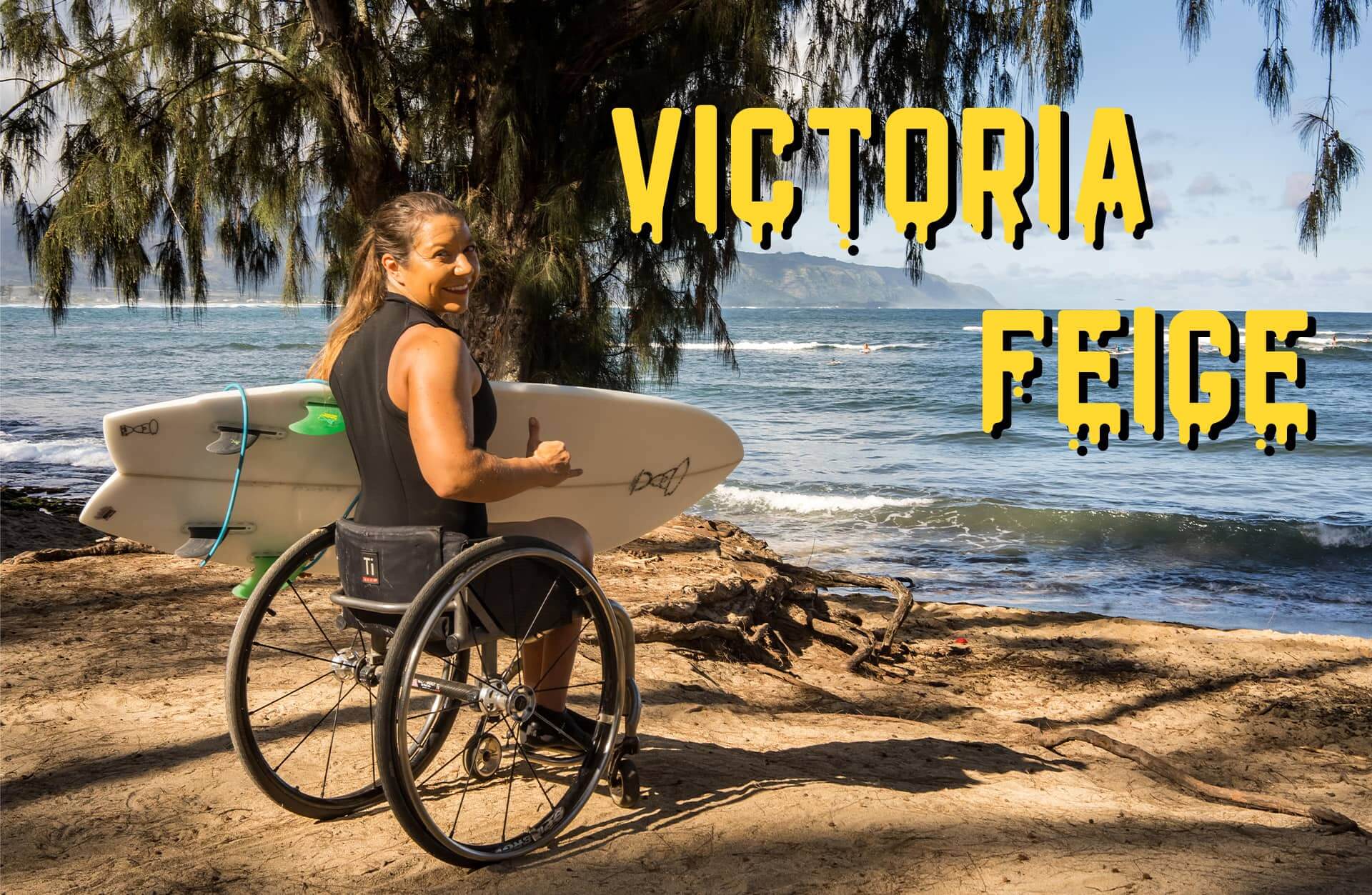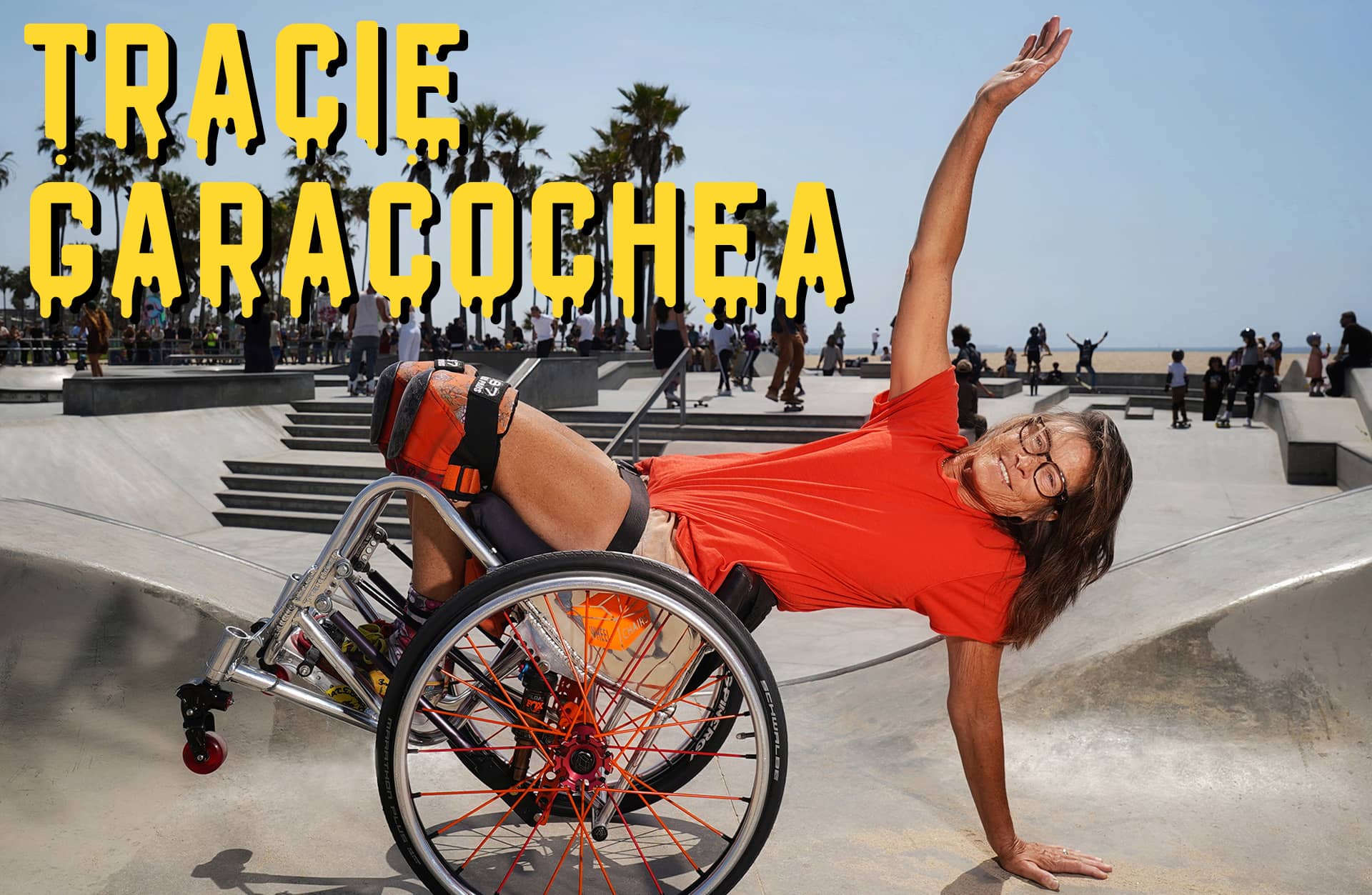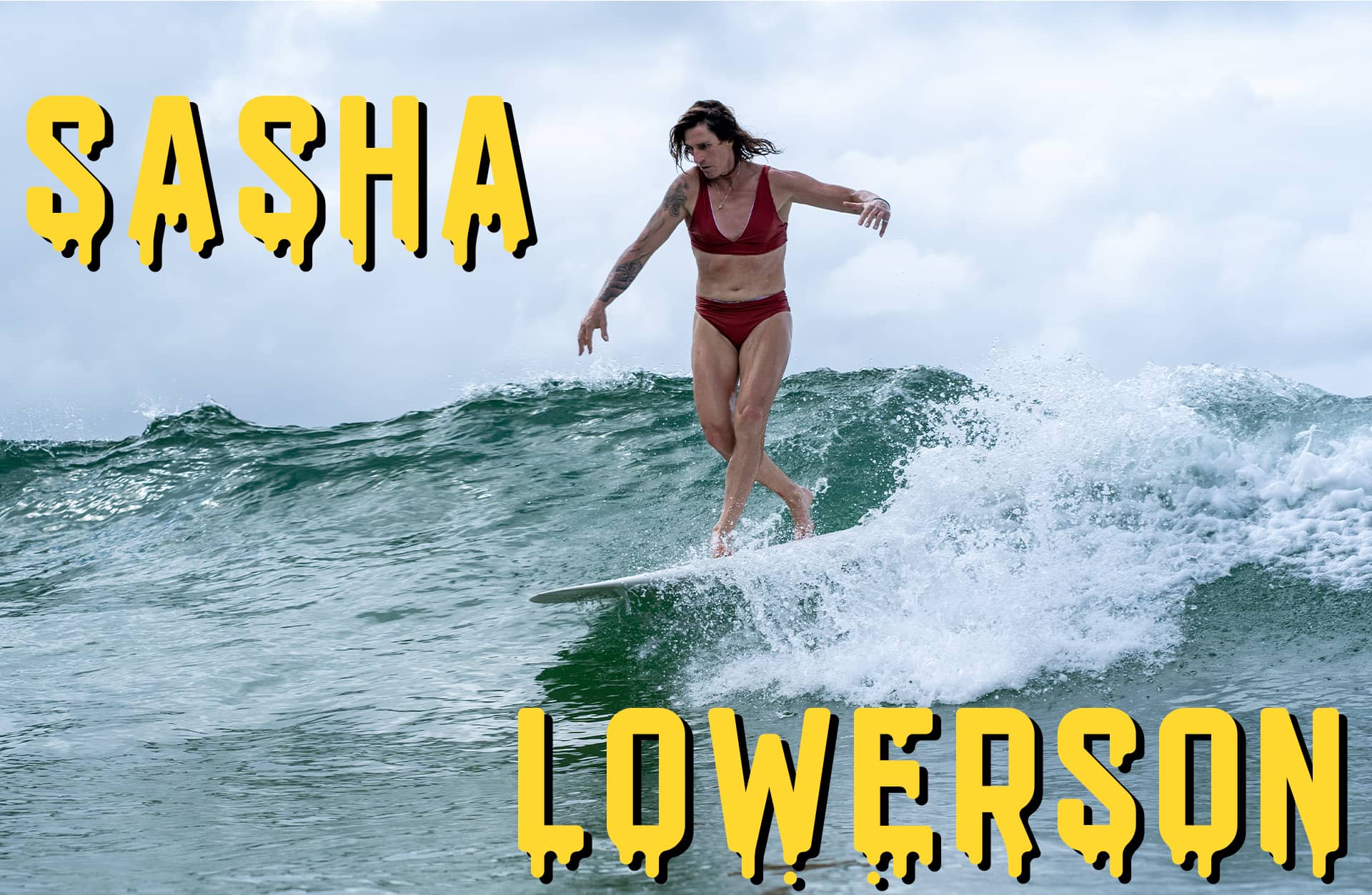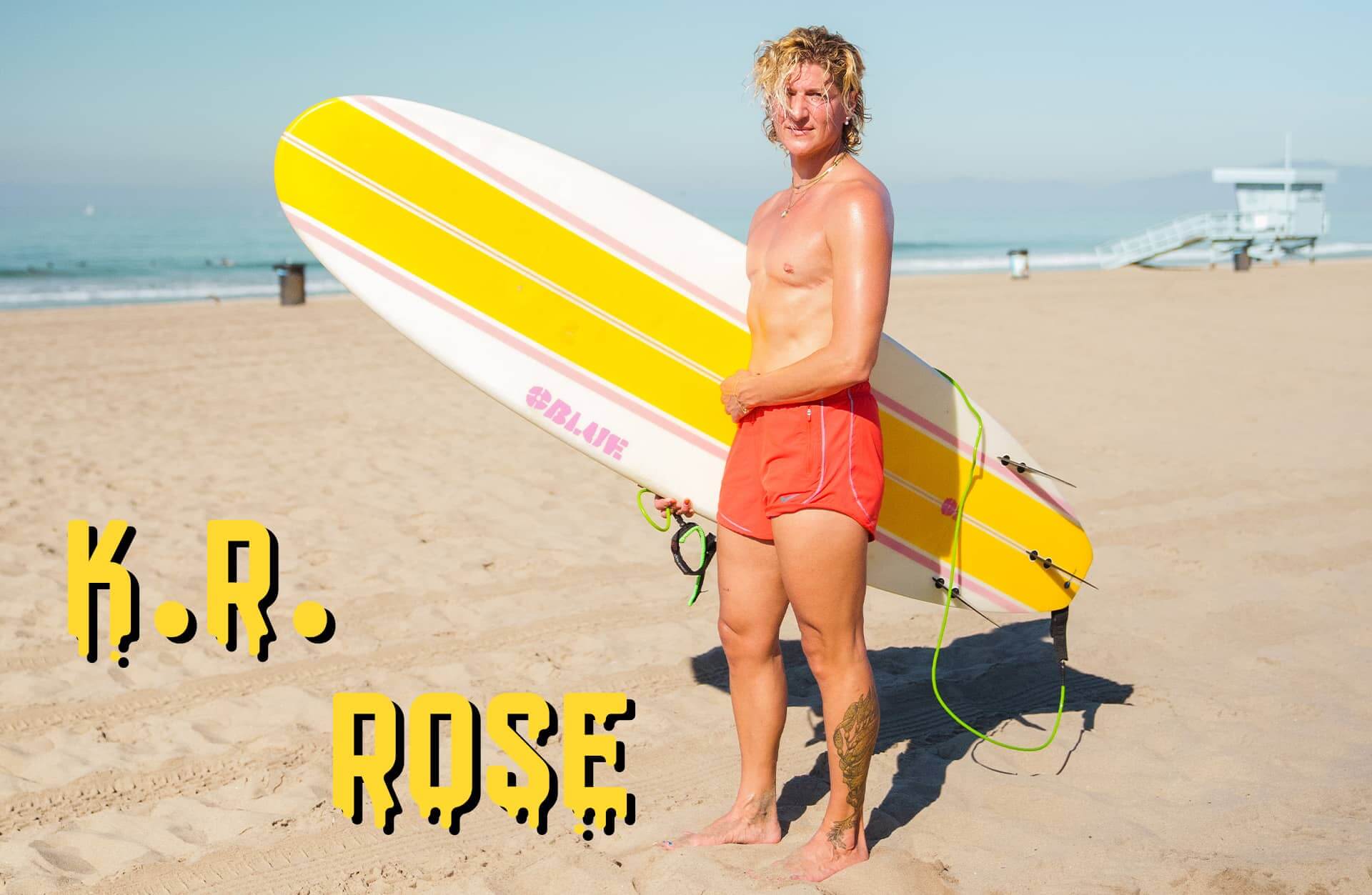SURF // 01 JUNE 2023
GOLDEN WAVES
When para surfer Victoria Feige was invited to her first para surf event, her expectations were, simply put, low. “I thought it would be a low level contest. I thought it would just be a feel-good event and I got schooled. I came second to last. I really got worked,” laughed the now 4 time consecutive para surfing world champion. “It was amazing to see high level para surfers from Brazil and Australia do cutbacks, snaps and get barreled. It changed my perspective about what is possible for adaptive surfing and what is possible for me.”
As a child, Victoria was all rough and tumble, always looking for ways to have fun outside. “I learned how to ski when I was a toddler. I loved that sliding on snow feeling. Falling down was so hilarious. Then [you could just] get back up again. That [playfulness] is probably what got me into it,” recalled Victoria. “Skiing and snowboarding were my first loves. I’ve done them ever since I can remember. Then it was skateboarding and then surfing when I was a teenager.” She grinned, “I love the rush.”
It was Victoria’s initial passion for snowboarding that drove her to pursue surfing. Watching surf media, she could see the parallels between riding a wave and floating on powder snow. She wanted to know if she could truly chase that feeling out in the water. “I begged my mom to take me to Tofino when I was sixteen,” said Victoria. “I kind of knew I’d love it before I tried, and then it was even better than I expected. I was hooked from the first wave.”
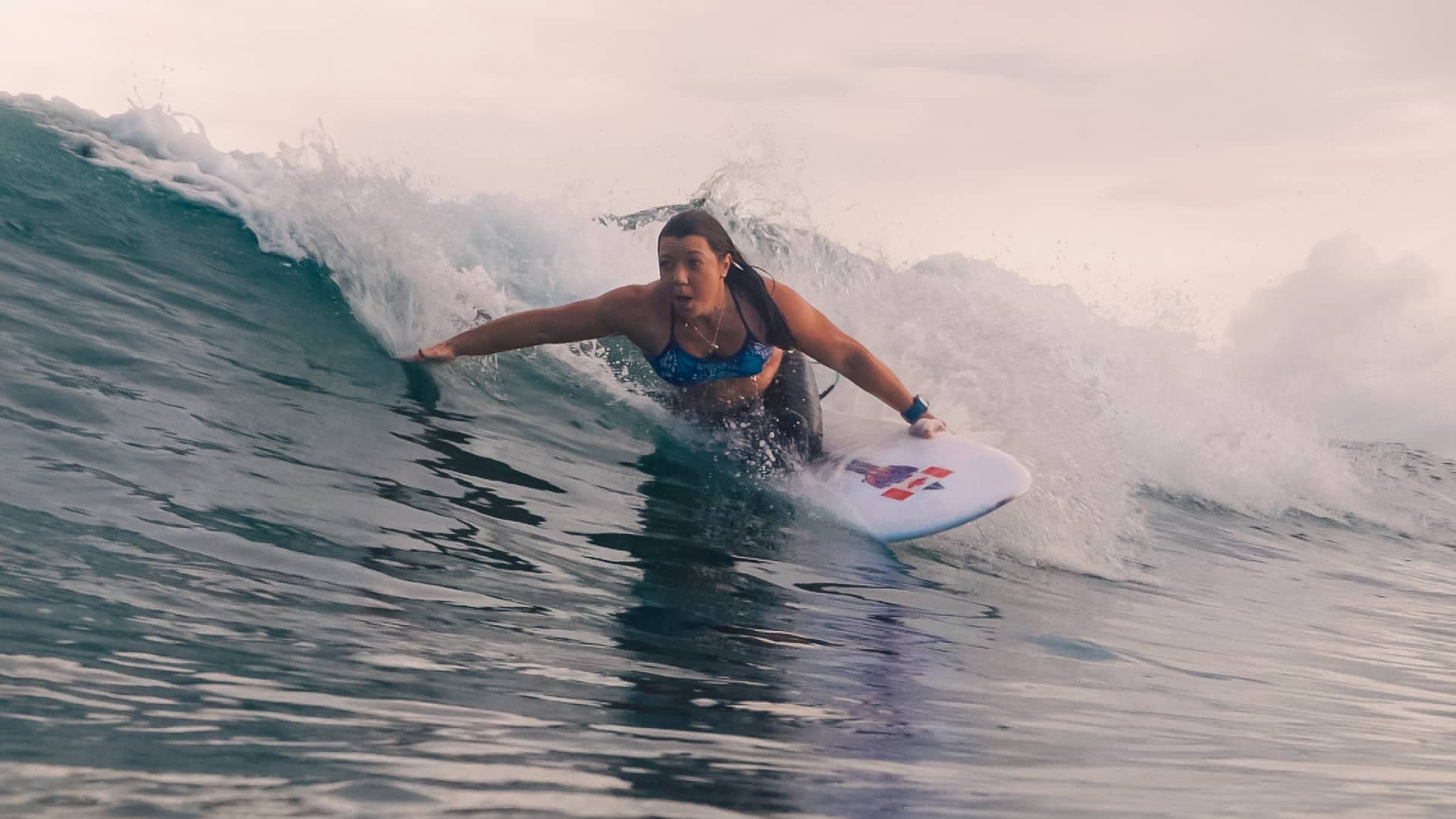
At eighteen, Victoria’s outdoor adventures were put on a brief hold after crushing a vertebrae while snowboarding. “I took a snowboard kicker,” she explained. “I got about twelve to fifteen feet of air, landed badly, and sustained a spinal fracture and paralysis. I became a wheelchair user and I did the whole rehab process, which took months.”
While going through rehab and relearning how to ski and surf, Victoria has found that the most consistent obstacle she’s faced post injury is managing other people’s cursory perceptions. As she explained, “I’m good at problem solving. If there’s somewhere I want to go, I can usually find a way. But dealing with the social assumptions was much more challenging to navigate. I look different in a chair, whichever room I go into, people often perceive that difference first, so then I have to work to show more commonality. I do think we have more in common than we have difference, but sometimes people don’t know where to start. Wherever I go, I often feel like I try to put people at ease. I’m usually the one do the work to try to find some points of connection. ”
Along with trying to keep others comfortable, Victoria found that her story was frequently taken from her hands and molded to suit the needs of others. “I felt like a screen onto which people projected whatever it is they wanted to see. Whether it was their own fear of ending up in a wheelchair, or a cautionary tale about women in adventure sports, or a tragedy about someone getting injured so young, or an inspirational person who overcomes everything. All of these stories lack nuance.”
While maneuvering through these new social hurdles, Victoria worked to get back on her board However, Victoria had doubts about the level of progression she’d be able to achieve post-injury. “For surfing I knew I was a good swimmer and I could go straight on a longboard. One of those giant soft tops where you catch anything. But I never thought I would do any type of maneuvers or any technical surfing. No real turns. Nothing crazy,” explained Victoria. “It was fun, but it was not how I envisioned it. So I thought, well, I’ll just be a recreational skier and surfer.”
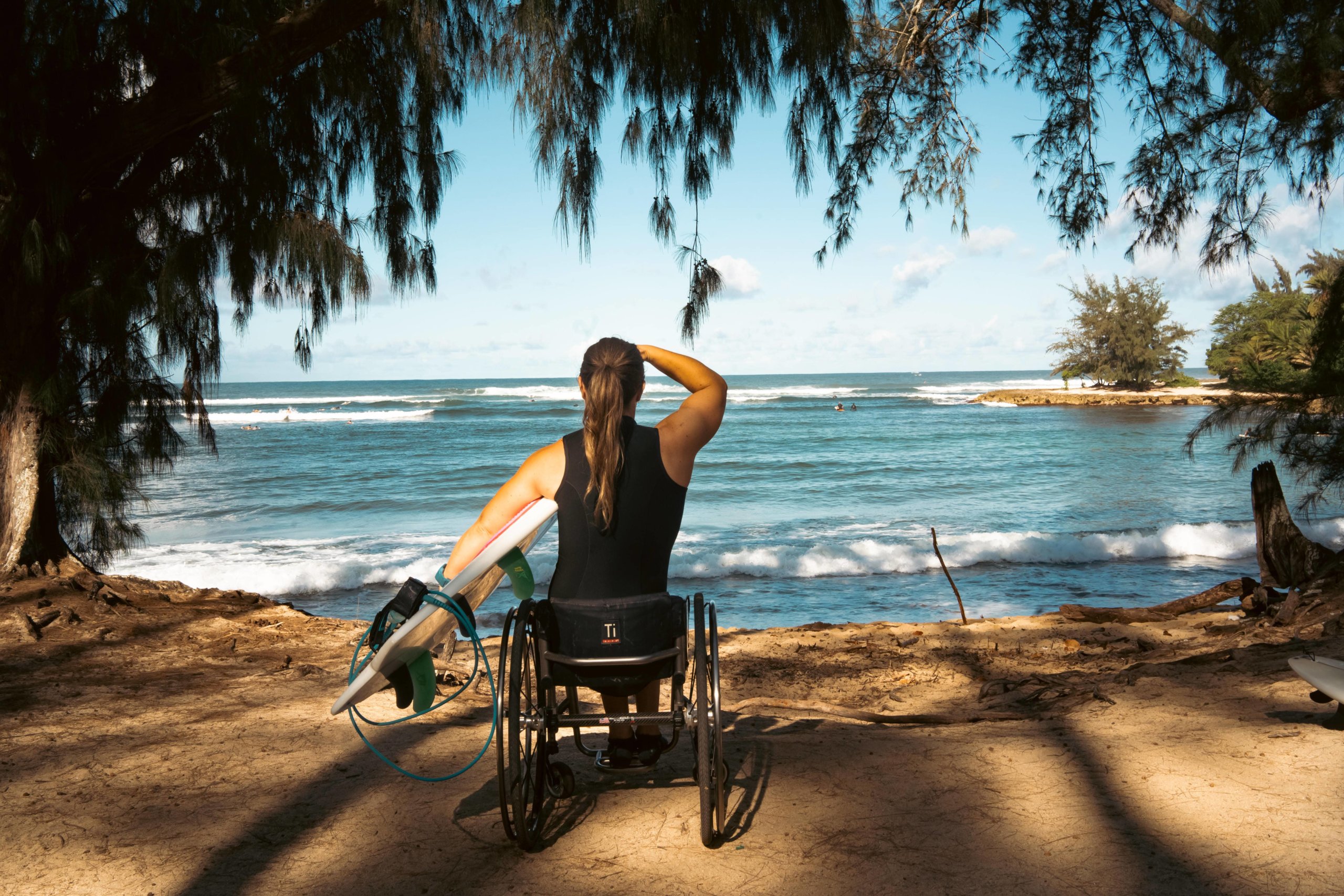
With outdoor sports on the backburner, Victoria turned her attention in a new direction, graduate school. “I’m a registered physical therapist,” said Victoria. “I’ve been really focused on that for the last 15 years. I went into physio because I worked with such great physios that I wanted to do neuro physiotherapy and pay it forward.”
Grateful for her own experiences, Victoria recognizes that not every patient is fortunate enough to work with understanding practitioners. Systemic and historical biases don’t go unacknowledged in medical school, but academic knowledge is not the same as lived experience. This gap often leaves marginalized communities without adequate support. “We’re not just talking about people who have some kind of physical disability,” explained Victoria. “It can be people who struggle with chronic pain, people who are trans who may not want to go see a doctor in their small town because the doctor may not be great to work with in terms of the social awareness, even if they are good at the medical practice. Having people from a variety of different backgrounds represented in the medical field and represented in every field, that’s the goal., I think it informs your care and I think you can be a more empathetic practitioner and better person if you are at least a little bit aware of other people’s experiences. I think that so many people are written off too quickly. That’s been both my experience as a patient, clinician, and surfer.”
As one of the few, if not only, physiotherapist in a wheelchair, Victoria was consumed by her work for many years. It wasn’t until a friend texted her to see if she’d be interested in competing for Canada at the 2016 International Surfing Association’s Para Surfing World Championship that the tides shifted. “I thought it was just going to be like a one off weekend and it really turned out to be this crazy life-changing adventure,” laughed Victoria.
That competition was the first time Victoria was exposed to an elite level of para surfing. She realized that the desire for growth she’d written off long ago was not only possible, it was right in front of her. “That’s when I really started to pursue progression. I wanted to get better. I wanted to get to that highly technical surf level and it never seemed possible before so I never really took it that seriously,” said Victoria. “It’s been an amazing discovery and really a pleasure to get something that I loved back again in a way I never thought I would.”
Becoming a world champ didn’t even cross Victoria’s mind as she began to push herself within her sport. “Some people have that unshakeable self belief… I am not one of those people,” she laughed. After two years of exploration and progression, Victoria saw the results of her hard work when she won two contests two weekends in a row, one of which was at the iconic Huntington Beach. Victoria had to win two in a row to develop that self-belief. It was then that an inkling formed that maybe, if she really applied herself, she could get pretty good.
“I started studying surfing, but I also studied heat strategy,” said Victoria. “I watched a lot of professional surfing and I tried to learn more than just the maneuvers, but how to surf a heat, which are two different things. That’s when I thought, I’d really see how far I can go with competing. And it’s been pretty wild. I’ve done quite well, but continually to my surprise.”
Quite well is quite the understatement as Victoria recently took her fourth championship title in her division last December at Pismo Beach. However, Victoria knows that her successes would not have been possible without the support of the adaptive surf community. “The community is unique and special, without a doubt we all want to win, we all push each other to be the best we can,” explained Victoria. “There really is a sense of camaraderie and helping each other out. People have let me try their boards and given me advice about positioning, what waves to catch, or how to just calm down in a heat and be more strategic. Certainly adaptive surfers are competitive, and we want to excel. But a lot of us had to overcome unique obstacles to get here, so we have an appreciation for the work it took.”
Para surfing has nine officially recognized divisions: Upper Limb Stand, Below Knee Stand, Above Knee Stand, Para Surfing Kneel, Para Surfing Sit, Unassisted Prone, Prone Assist, Blind/No Vision, and Partial Vision Impairment. Athletes across each division employ different strategies to make catching and riding waves easier. Though she only competes in the kneel division, Victoria has befriended surfers across all brackets of the para surfing community and learned something from each. “It’s all about riding the energy of the waves and reading the ocean. Those are the core elements of surfing,” explained Victoria. “Whether you surf with a prosthetic leg or prosthetic arm, prone or kneeling, your body mechanics will be a little bit different and your board will be a little bit different. But the feeling of surfing is the same.”
This proclivity to share knowledge around adaptive gear and strategies stems from the inception of these sports. “Adaptive surfing was born just like adaptive skiing, with people making stuff in their garage and taking it out in the ocean and trying it,” said Victoria. “That do-it-yourself ethic where you just find a way through trial and error. We’re all about that, but it keeps you humble. The joy in the creation and discovery is a part of the fun.”
Now, as she’s become a top competitor in her sport, Victoria is stoked to pay forward all those years of support she’s received from others in the adaptive community. “I think I enjoyed teaching and helping other people learn to surf and ski more than pretty much anything, except maybe powder skiing,” she laughed.
In 2020, when Victoria took her second world title, she was approached by one of the other women in her final heat. Victoria recalled, “[She] asked me, how did you actually do that? How do you surf? Because at that time she was surfing on a ten foot soft top. So I was like, let’s just go surf. You can try my board. I can talk about how I pop up. We can break it down. If I can do my part to help give back and help other people achieve what they might not have thought possible, that has more meaning than a high score from the judges.”
With nine divisions, para surfing is an incredibly diverse sport, but due to the lack of visibility, many adaptive individuals are not aware that there is probably a category that suits their needs. While the sport has grown significantly over the last eight years, Victoria wants to see even more adaptive folks in the water. So along with helping others in the adaptive surf community, she wants to put the sport in front of the eyes of the world by pushing for para surfing’s inclusion in the Paralympics. “It would be good for the Paralympics to create a new, vibrant sport that’s more adrenaline based and fun to watch. And it would be good for para surfers to raise awareness and build our sport, which would hopefully lead to access to federal funding for training camps, flights, and accommodations,” said Victoria. “Once upon a time, wheelchair basketball was not the well funded sport that it is now. But if para surfing could rise up, like I know it can, I think that there could be real cool avenues for more people to pursue what they love at the highest level.”
Still, it has been a joy for Victoria to see more para surfers, especially women, enter the water over the years. “At my first competition in 2018, I was 1 of 7 women across all divisions [while there were] about 80 men,” said Victoria. “Now there’s about 60 women across all divisions. I think more women would get involved if they knew how. If they knew what wetsuits to wear, how to get in one or what boards to try as a para surfer.”
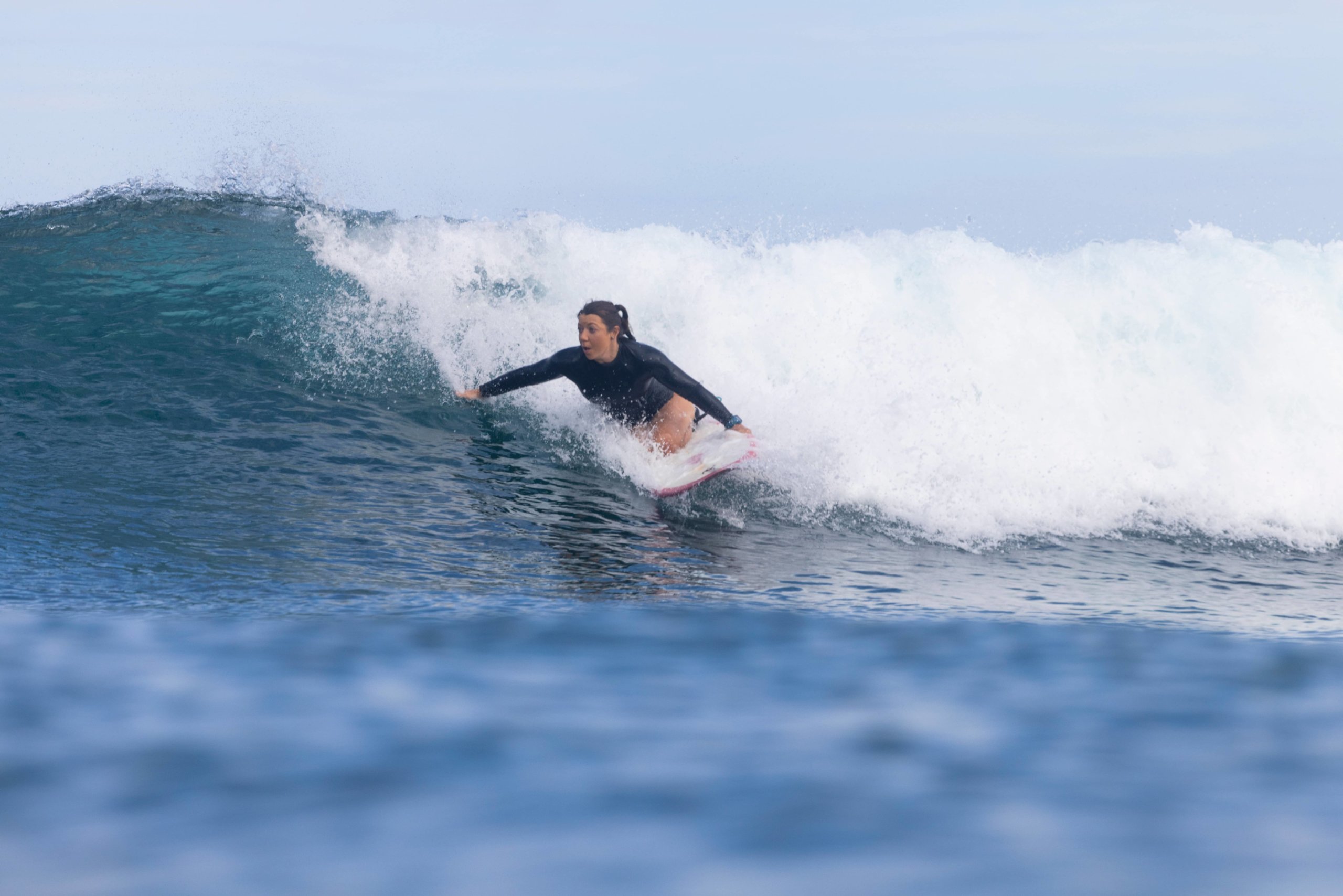
So, for the aspiring para surfer, here are some words of advice from the champ. One, “having a warm enough wetsuit was critical for surfing in Canada. Rip Curl’s Flash Bomb wetsuits have been the easiest to get into, paddle efficiently and also stay warm. You just have so much more fun when you’re warm and can move and can actually surf at the level you know you can.”
Two,“for new para surfers I usually recommend a soft top fish that’s super high volume as opposed to a huge longboard. Because if you’re knee boarding or if you’re on your stomach prone, it’s easier to transport, it’s easier to catch the waves, and it’s so much easier to maneuver when you’re up and riding.”
Three,“if people think they would like to get involved with adaptive surfing, but they don’t live anywhere with local breaks, go to a local pool. I did that for years. I lived 6 hours from good surfing. I just went to the pool all the time. I would swim and paddle a little surfboard in the pool. I got permission from lifeguards and would practice my balance, paddling, and duck dives. Most of surfing is paddling. So, if you can get good at that aspect of it, then you can have more fun in the water. Honestly, that’s how I did so well fitness-wise in the competitions.”
There are also a number of organizations to support adaptive surfers when they’re first entering the water. “Access Surf is one of the premier organizations to help make the ocean accessible for all. [It’s great for] people that require more physical assistance or they’re nervous about going into the ocean with just friends or family and want a bit more support,” said Victoria. “There can be a big gap between some of the adaptive lessons offered from abled-bodied instructors who have all the best intentions, but are pretty inexperienced with adaptive sports, and instructors who have specialized training [with adaptive surfing]. People who have an adaptive surf instructor certification from the ISA have a much higher level of knowledge than a local surf instructor who has totally got the right attitude, but may not be aware of some medical issues or may not be aware of different equipment. I would highly recommend that people get an adaptive surf instructor lesson instead of just going with their local shop. It will probably be a better experience.”
However, the most valuable resource for an adaptive surfer at any level, is the advice of others in the community. “It’s hard to grow in a vacuum if you’re just doing your own thing. It’s hard to know how much more you can do,” said Victoria. “So if anybody, male or female, adaptive or not, wants to reach out, I’m always happy to help. It might just be a couple of days before I can hit them back.”
For those outside of the adaptive community who want to provide their support without overstepping any boundaries, Victoria gives this advice: “If you want to learn about a demographic, Google it. But if you want to learn about an individual, talk to them in person and learn their experience. Many people are just curious. A lot of people say, I’d love to learn how you surf. Then it’s an opportunity for connection and it’s an opportunity for someone not just to learn about something new, but to learn about me individually. Then that’s where all the fun parts of human interaction begin. Most everybody means well and most everybody wants to connect. And if you’re into board sports, you already have points of commonality that you can chat about.”
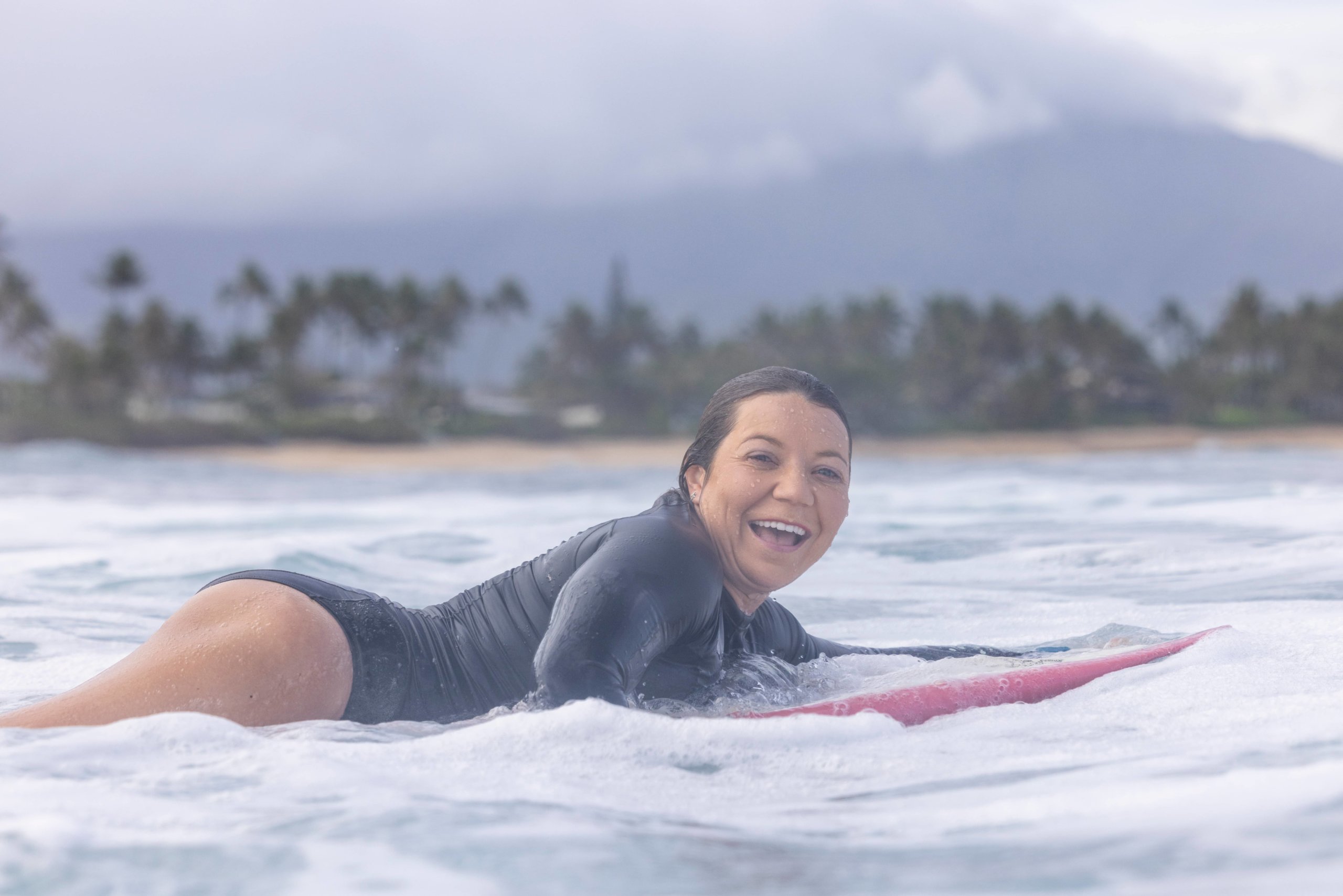
Reflecting back on the path from “one-off weekend” to “world record holder”, Victoria smiled. “It’s a wonderful feeling. I’m proud of my duck dives because that was really hard for me. I had to really analyze the physics and create that for my body. It’s wonderful to win four world titles consecutively, that’s crazy.. But having surfing in my life every day, that’s the best.”
At the end of the day, Victoria is still that same rough and tumble kid. Whether that be floating through powder or carving up a wave, there is that same hunger for adrenaline. And as any adrenaline junkie knows, that constant search for the next thrill exists at the precipice of an athlete’s progression. As Victoria explained, “I just wanted to be outside and with my kind of people. And that’s what I found with adaptive surfing. And because I like it so much, I keep on pushing myself. My sense of progression is driven not so much by winning, which is a wonderful feeling, but rather I want to see how far I can go for my own level. That’s why I moved to Hawaii and that’s why I continue to try to raise the level of women’s adaptive surfing and my own level because I don’t think we’re anywhere close to the ceiling yet,” she grinned. “The fun is in the chase.”
